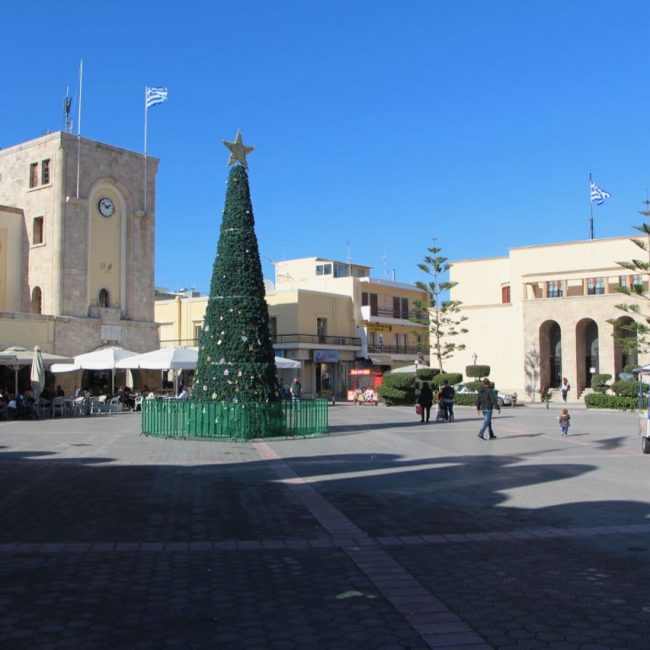The Church of Saint Ioannes Naukleros (Boatswain – Άγιος Ιωάννης Ναυκλήρος) dates from the early 15th century and was originally dedicated to Saint John the Baptist, patron and protector of the Knights of Saint John, who occupied Cos from the early 14th century until 1522.
Description of the Church
It is a single-aisle church, with a vaulted roof, a three-sided apse and two entrances, one to the west and another to the north side. The sanctuary apse was decorated with wall-paintings developed in three zones. Six Officiating Hierarchs are depicted in the lower zone, the scene of the Holy Eucharist (Metalepses and Metadoses) in the middle zone, and in the conch of the apse the representation of an Apocalyptic Vision, of which only the bare feet of the Christ stepping in two flaming rotae have survived. The subject is perhaps associated with prevailing beliefs in Christendom in this critical period, on the coming of the end of the world.
Relocation of the Church
The church stood at the limits of the walled town (Hospitaller burg), in the quarter later known as Chora. It was in a ruined state before 1861, when the Community of Cos commissioned Anastasios Platanistas to undertake its conservation. After the 1933 earthquake, in the course of excavations conducted by the Italian Archaeological Mission, it was ascertained that the church was built upon the important twin sanctuary of Aphrodite. In June 1943, it was decided to relocate the church to the NW part of Chora, an ambitious technical project at that time, in order to uncover the sanctuary. The church was reconstructed using the authentic numbered stones and new masonry. The parclose of the presbytery was also created, in accordance with the Roman Catholic rite.
The martyrdom of Ioannes Naukleros (Botswain)
In 1947, the Metropolitn of Cos, Emmanuel Karpathios, dedicated the church to a Coan Neomartyr, St Ioannis Naukleros. The Coan boatswain Ioannes was bewitched by the Turks on the island and became a Muslim. When he recovered and saw himself circumcised and wearing a white turban, he repented and renounced Islam. The Turks arrested and imprisoned him, but he continued to confess his Christian faith from jail. He was then brought before the judge, who sentenced him to death by fire.










